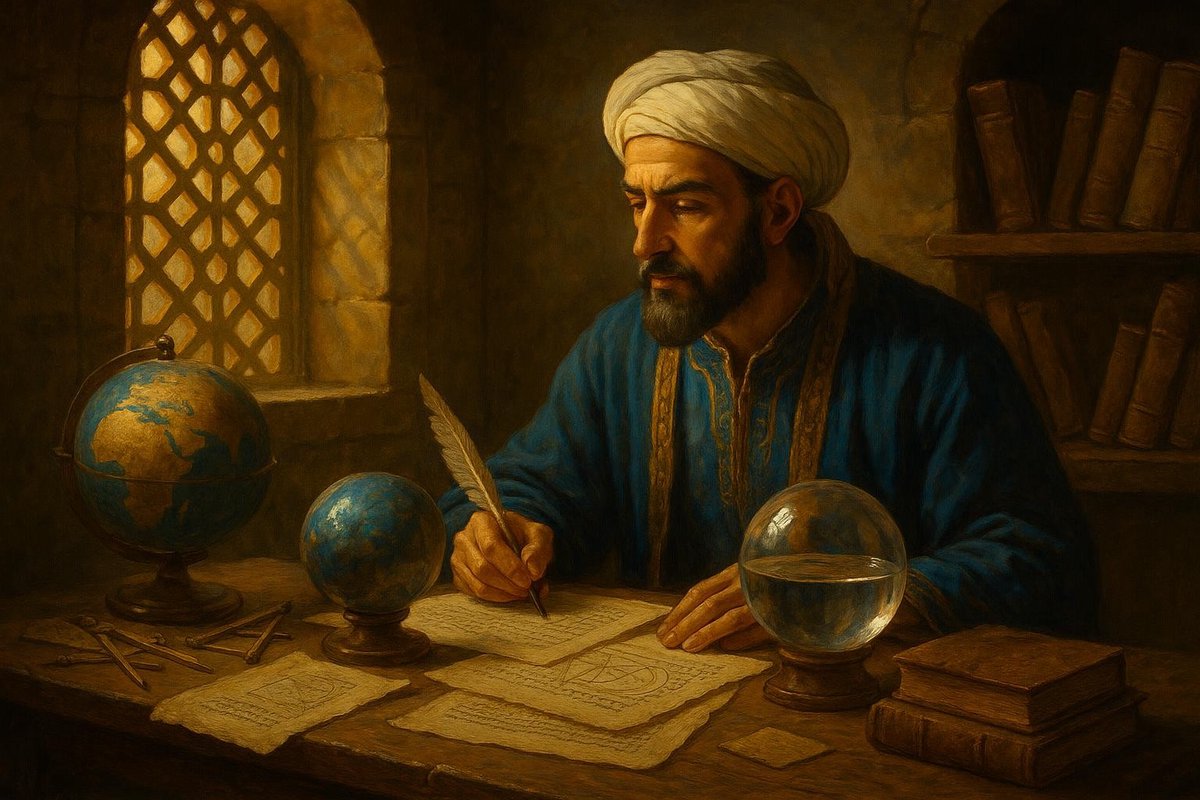
Alhazen’s World: Where Light and Angles Dance
In the heart of the 11th century, a brilliant mind named Alhazen looked at the world and saw more than just shapes and colors. He saw a dance of light and angles, a complex choreography that he was determined to understand. This wasn’t just a scientific quest; it was a passion to uncover the secrets that lay hidden in everyday vision.
- Alhazen’s work laid the foundation for how we understand optics today.
- His insights showed that light travels in straight lines, a simple yet revolutionary idea.
- He delved into the geometry of sight, explaining how we perceive space and form.
Interestingly, many people of his time believed vision was due to rays emitted by the eyes. Alhazen flipped this notion, suggesting that vision occurs when light reflects off objects and enters the eyes, an idea more aligned with our current understanding.
The Geometry Behind the Curtain of Vision
Alhazen didn’t just stop at observing light; he dissected its nature through the precise language of geometry. He viewed geometry not as a set of abstract rules but as the seamstress stitching the fabric of reality together. His work on optics was far ahead of its time, a beacon in the medieval world.
- Alhazen’s methodical experiments and observations formed the backbone of his theories.
- He employed geometric principles to explain phenomena like reflection and refraction.
- His understanding paved the way for the mathematical treatment of light.
Of course, Alhazen’s geometric vision was not just about light. It was about how we see the world itself, offering insights that would inspire future generations of mathematicians and scientists alike.
Breaking the Mysteries: Alhazen’s Method
Alhazen’s approach to understanding the mysteries of vision was akin to a detective piecing together clues. He didn’t rely on mere speculation; instead, he pioneered a method based on observation and experimentation, similar to modern scientific methods.
- He meticulously documented his observations, providing detailed records for others to follow.
- His work involved experiments with light and shadows, unraveling the behavior of light under different conditions.
- By systematically testing his hypotheses, Alhazen established a new standard for scientific inquiry.
As time goes on, Alhazen’s methodology continues to be a guiding light, demonstrating the power of empirical evidence over mere conjecture.
Legacy of Light: Alhazen’s Enduring Influence
Alhazen’s influence extended beyond his lifetime, casting a long shadow over the future of both optics and geometry. His work laid crucial groundwork for the Renaissance and the scientific revolution that followed. His ideas were like seeds planted in fertile ground, blossoming into a rich tapestry of knowledge that defined the course of science.
- His writings inspired thinkers like Kepler and Newton, who expanded on his principles.
- Modern optics owes a debt to Alhazen’s pioneering insights into light behavior.
- The principles he established remain integral to fields as diverse as astronomy and photography.
No wonder Alhazen is often celebrated as the father of modern optics, his light still shining brightly centuries after his time.
Conclusion: Alhazen’s journey through light and angles offers a fascinating glimpse into the birth of modern science. His enduring legacy reminds us of the power of curiosity and the relentless pursuit of truth. As discoveries continue to unfold, his work stands as a testament to the beauty and complexity of the natural world.
Fuel Someone Else’s Curiosity
If Alhazen’s story has sparked your interest, imagine what it could do for others! Share this journey of light and discovery with friends and family. Let them see how the past shapes our understanding of the present, and perhaps, ignite the flame of curiosity in someone new. Dive into the dance of light and angles and share the wonder!

Leave a Reply